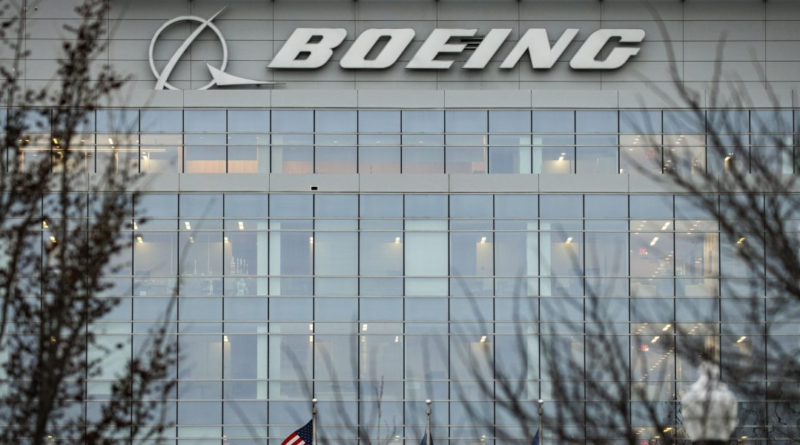Boeing is tackling its 'good ole boys' culture–but the company still has a long way to go before it gets its production and financials right
As soon as the Alaska Airlines door fiasco erupted, we warned that Boeing’s executives ran the risk of having their heads in the clouds and planes on the ground if they did not respond decisively, after presciently predicting persistent supply chain and quality control flare-ups last year based on several decades of close observation of the company through various iterations and having known the last six Boeing CEOs personally.
To the credit of CEO Dave Calhoun, in the weeks since, he has been laser-focused on the three crucial areas we suggested as Boeing’s key priorities: governance and culture challenges, supply chain and production failures, and restoring mutual trust with regulators, customers, and the flying public.
This week’s announcement of a leadership shakeup within the management ranks of Boeing represents more encouraging initial progress. Boeing deserves credit for these promising first steps but it still suffers from glaring vulnerabilities. Passengers–and shareholders like us–may want to fasten their seat belts because, despite some early wins, there is possibly worse turbulence on the horizon and far tougher challenges still ahead.
Governance and culture: Shaking up the good ole boys network
Already, since Boeing MAX planes were first grounded in 2019, a vast majority of the Boeing board has turned over, with the formation of a new Board Safety Committee consisting of almost entirely new members, as well as the creation of a new Chief Aerospace Safety Officer position.
However, as we previously warned, despite the sterling credentials of the company’s board and top officers, the safety mandate was not percolating down through the ranks.
Perhaps it was not a coincidence that Stan Deal, the head of the division in question, Boeing Commercial Airplanes (BCA), relieved the general manager of the problem-plagued 737 MAX factory of his duties merely days after Federal Aviation Administration (FAA) Chief Mike Whitaker visited that same factory, in Renton, Washington.
But what is truly impressive is the elevation of several women leaders to the senior operational ranks. In a staff memo, Deal announced Katie Ringgold as the new general manager of the Renton plant and appointed Elizabeth Lund to the new position of senior VP for BCA Quality. Deal himself, of course, reports to newly-appointed Chief Operating Officer Stephanie Pope, rumored to be a top internal candidate to succeed Calhoun.
If there ever was a complacent good ole boys culture, there is no better way to shake things up from top to bottom. The successful tenures of trailblazing women leaders in aerospace and aviation such as Kathy Warden of Northrop Grumman, Phoebe Novakovic of General Dynamics, and Marillyn Hewson of Lockheed Martin is proof that merit always wins over machismo.
Supply chain and production: Making the best of a terrible situation
So far, Boeing deserves credit for getting grounded 737 MAX 9s back in the sky by following the FAA’s instructions, implementing “quality stand-downs” at every factory for front-line factory employees to focus completely on improvements to safety processes, appointing an external expert advisor for an independent review of Boeing’s safety processes (though that expert, a Navy admiral, does not have much aviation expertise), and opening Boeing factories to all airline customers for inspection, oversight, and increased transparency
Boeing has also been working more closely with key suppliers to fix its broken supply chain, especially the long-troubled Spirit AeroSystems, which manufactures virtually every Boeing MAX fuselage. Under new CEO Pat Shanahan, Spirit, which is based in Wichita, Kansas, appears to be improving, having already identified weak spots in the labor-intensive work on the forward and rear sections of the airplane and pledging to automate more rote assembly tasks (i.e. drilling holes, door plugs, etc.) so that engineers can focus on higher-value tasks and safety control.
This is making the best out of a terrible situation. There is no operational reason for Boeing to outsource so much of its supply chain other than pure financial engineering and runs contrary to Boeing’s history prior to the McDonnell Douglas merger. Under founder William Boeing, the company originally assembled storied aviation brands Pratt & Whitney, United Technologies, and Boeing all under the same corporate umbrella in the 1920s. And although Boeing sold Spirit to a private equity firm in 2005 for $1.2 billion, the market cap of Spirit today represents less than 3% of Boeing’s market cap.
Boeing’s key production challenge is how it will revitalize its engineering workforce, which may take years to solve. The pandemic saw an exodus of experienced engineering talent which has still not been fully replaced. According to aerospace analyst Ronald Epstein at Bank of America, before COVID-19, more than half of the Boeing MAX factory employees had 6+ years of experience. That percentage has now dwindled to less than 25% of the workforce, based on IAM/International Association of Machinists & Aerospace Workers District 751/Washington State membership rolls.
Restoring trust with regulators: The FAA’s schedule does not align with Boeing’s financial timeline
Although Calhoun has avoided angering regulators so far, several key regulatory hurdles are on the horizon as Calhoun and FAA Administrator Mike Whitaker prepare to meet next week.
First, the FAA is finishing its official six-week-long audit of production lines in the days ahead and is expected to publish its reports and findings shortly thereafter.
Second, and relatedly, the FAA does not appear to be close to providing the long-delayed MAX 7 or MAX 10 certifications. While Boeing is pleased to have gotten its 180 grounded MAX 9s back in the sky, the financial impact is dwarfed by the fact Boeing has an order backlog of 1,000+ MAX 7s and MAX 10s, equivalent to ~$100 billion in future sales, which is held up until the FAA finally provides certification.
Boeing is rightly prioritizing safety above all else, even if it means pushing out financial and production timelines. Yet, with only 27 planes delivered in January, down from 38 in December, and with Boeing rapidly drawing down inventory with the FAA prohibiting any production increases, the company will start to feel the financial heat and will likely not meet its 2024/2025 cash flow targets with management commentary around outlook becoming more bearish by the week.
Boeing is making the right moves so far–but it is not out of turbulence just yet with impending storm clouds threatening to prolong this bumpy stretch.
Jeffrey Sonnenfeld is the Lester Crown Professor in Management Practice and Senior Associate Dean at Yale School of Management. He was named “Management Professor of the Year” by Poets & Quants magazine.
Steven Tian is the director of research at the Yale Chief Executive Leadership Institute and a former quantitative investment analyst with the Rockefeller Family Office.
More must-read commentary published by Fortune:
The opinions expressed in Fortune.com commentary pieces are solely the views of their authors and do not necessarily reflect the opinions and beliefs of Fortune.



